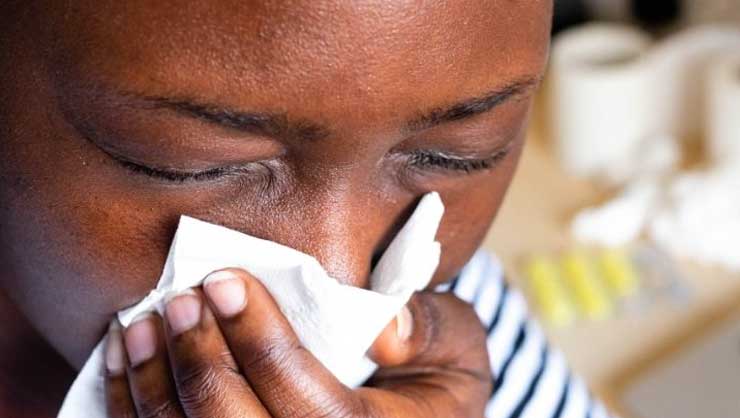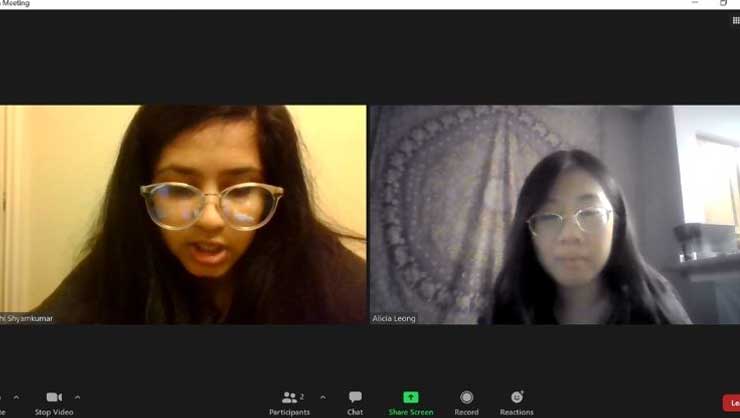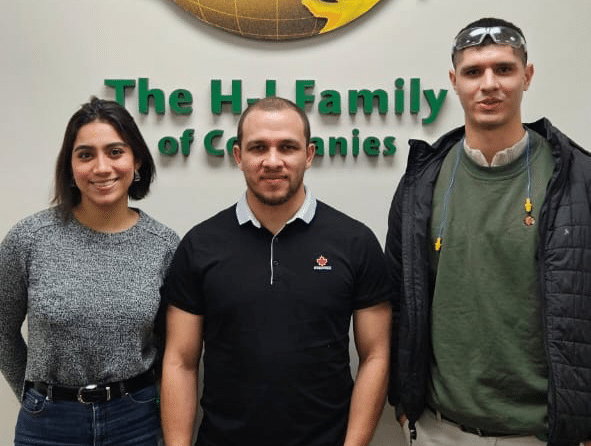Christianson Fellow Alicia Leong deferred medical school for a gap year in Eswatini, located in Southern Africa, with the Baylor College of Medicine’s Eswatini Tuberculosis Centre for Excellence. She intended to analyze the impact of a food-assistance program on children’s adherence to tuberculosis treatment. COVID-19 interrupted her plans, but Alicia adapted by contributing remotely to Baylor’s efforts to learn how to best help children adhere to critical medication regimens. Alicia shares how her project shifted and how she has adjusted to remote work.

It is estimated that, globally, 1.2 million children develop tuberculosis (TB), and 230,000 die from it each year. Although often overlooked by healthcare providers, pediatric TB can be prevented, controlled, or cured with timely, appropriate treatment.
Ninety-eight percent of the world’s TB cases are reported in low-and middle-income countries (LMICs), where there are low rates of patients starting, sticking to, and completing treatment. Completing medication is important not only for individuals but also for public health. Among children, adherence to TB treatment is complex, often dependent on healthcare system factors, as well as their caretakers’ understanding and motivation.
I originally prepared for a gap-year project (before starting medical school) in Eswatini, in coordination with Texas Children’s and Baylor College of Medicine’s Global TB Program, to learn if food assistance helps children stick to preventative medication.The World Health Organization (WHO) recommends the provision of TB preventive therapy to people living with HIV as well as infants and young children who are in contact with TB patients. Isoniazid preventive therapy (IPT), a frequently used preventive therapy regimen, involves a daily dose of isoniazid for at least six months. The effectiveness of IPT depends on 80% or greater adherence to the medication. Unfortunately, travel restrictions related to COVID-19 have indefinitely postponed our original plans.

Image courtesy of Shutterstock
My mentors, Dr. Kay and Dr. Mandalakas, have been consistently available as we navigate ever-changing circumstances which initially seemed daunting. As our team adapted by transitioning to a remote systematic review of strategies promoting pediatric TB treatment adherence, I have learned to problem-solve, collaborate, exercise reflexivity and humility, and become more confident in my self-efficacy as a global health researcher.
With Zoom, it was possible for researchers in Eswatini, Germany, the United States, and South Africa to converse with one another live.
This review is an extension of the ground-level work I had initially anticipated completing in Eswatini: food baskets are an example of a material incentive to help people stick to treatment. Cash, vouchers for groceries, and bus tokens are also material incentives, defined as economic interventions given to patients to reward healthy behavior. The systematic review encompasses any intervention targeted at promoting treatment uptake and adherence among patients, including not only material incentives, but also supervision of treatment, reminders, social support, and different TB preventive therapy options.
The majority of prior systematic reviews of TB treatment adherence interventions have focused primarily on adults and patients receiving treatment for active TB, and less on children and patients receiving treatment for latent TB (an infection that isn’t showing symptoms). We thus aim to conduct an updated systematic review (statistical analysis from multiple scientific studies) of strategies designed to promote the starting of TB treatment, as well as adherence and completion of this treatment, among children in LMICs.
How can results from a meta-analysis of studies conducted in multiple settings be translated into public health and national TB programs across different settings? Will our findings be limited by the diversity of the studies we end up including in the systematic review or, possibly, a lack of standardized research methodology on TB treatment adherence interventions?
In the past few months, we’ve welcomed new additions to our team, including a librarian at the Texas Medical Center Library in Houston (Lara!), a medical student based in New York City (Sri!), and a professor at University of Birmingham in England (Dr. Takwoingi!). While we haven’t been able to meet each other in person, Zoom (a now ubiquitous part of my life), has been instrumental in helping us develop and reinforce relationships with one another. Zoom has made it possible for me to connect a face to an email, despite the state borders and oceans that separate the members of our team.
We recently registered the protocol for our systematic review on PROSPERO, an international registry of systematic review protocols in health and social care. This will help facilitate transparency, reproducibility, and usability of systematic reviews. Seeing an abstract idea develop into a protocol and weekly meetings with researchers, who have varying academic backgrounds and levels of experience in their respective fields, has been motivating.
Another way in which our team has creatively used technology during COVID-19 is in the organization of the Global TB Program’s first-ever virtual retreat on December 9, 2020! It was the first time I had the opportunity to meet the rest of the Global TB Program team, including researchers checking in from Mbabane (the capital of Eswatini, and where Baylor-Eswatini is located); Borstel, Germany; Cape Town, South Africa; and Pennsylvania and Houston in the United States. Team members and collaborators came together to present and discuss updates on ongoing projects. With Zoom, it was possible for researchers in Eswatini, Germany, the United States, and South Africa to converse with one another live.

Image courtesy of Alicia Leong
It was a privilege having the opportunity not only to present alongside Sri about our progress on the systematic review, but also to receive feedback and questions from other team members, many of whom have had years of on-the-ground clinical experience in Eswatini and other sub-Saharan African countries with TB preventive therapy treatment. Others have worked extensively in biostatistics, patient-centered care, TB diagnostic technologies, TB contact management, multidrug-resistant TB epidemiology, and development of individualized TB care based on the genetics of host immunity and Mycobacterium tuberculosis, the bacterium which causes TB.
This concerted effort, drawn from multiple disciplines and multiple nations, has helped me anchor my project within a supportive, collaborative space. It also motivated me to think about the translation of our systematic review findings to policy and practice: how can results from a meta-analysis of studies conducted in multiple settings be translated into public health and national TB programs across different settings? Will our findings be limited by the diversity of the studies we end up including in the systematic review or, possibly, a lack of standardized research methodology on TB treatment adherence interventions?
In my next blog, I’ll discuss the presentations featured in the Global TB Virtual Retreat!
Data Sources
Tuberculosis. (2020, October 14). [Fact sheets]. World Health Organization.
Global Tuberculosis Report 2020. (2020). World Health Organization; Weaver, M. S., et al. (2015).
Bulletin of the World Health Organization, 93(10), 700-711B; Saunders, M. J., et al. (2018). European Respiratory Journal, 51(3).
Guidance for national tuberculosis programmes on the management of tuberculosis in children (Second edition). (2014). World Health Organization.
The Christianson Fellowship is awarded to U.S. citizens between 18 and 28 who have independently arranged a service project abroad for at least six months. Selected fellows receive up to $10,000 in funding.




